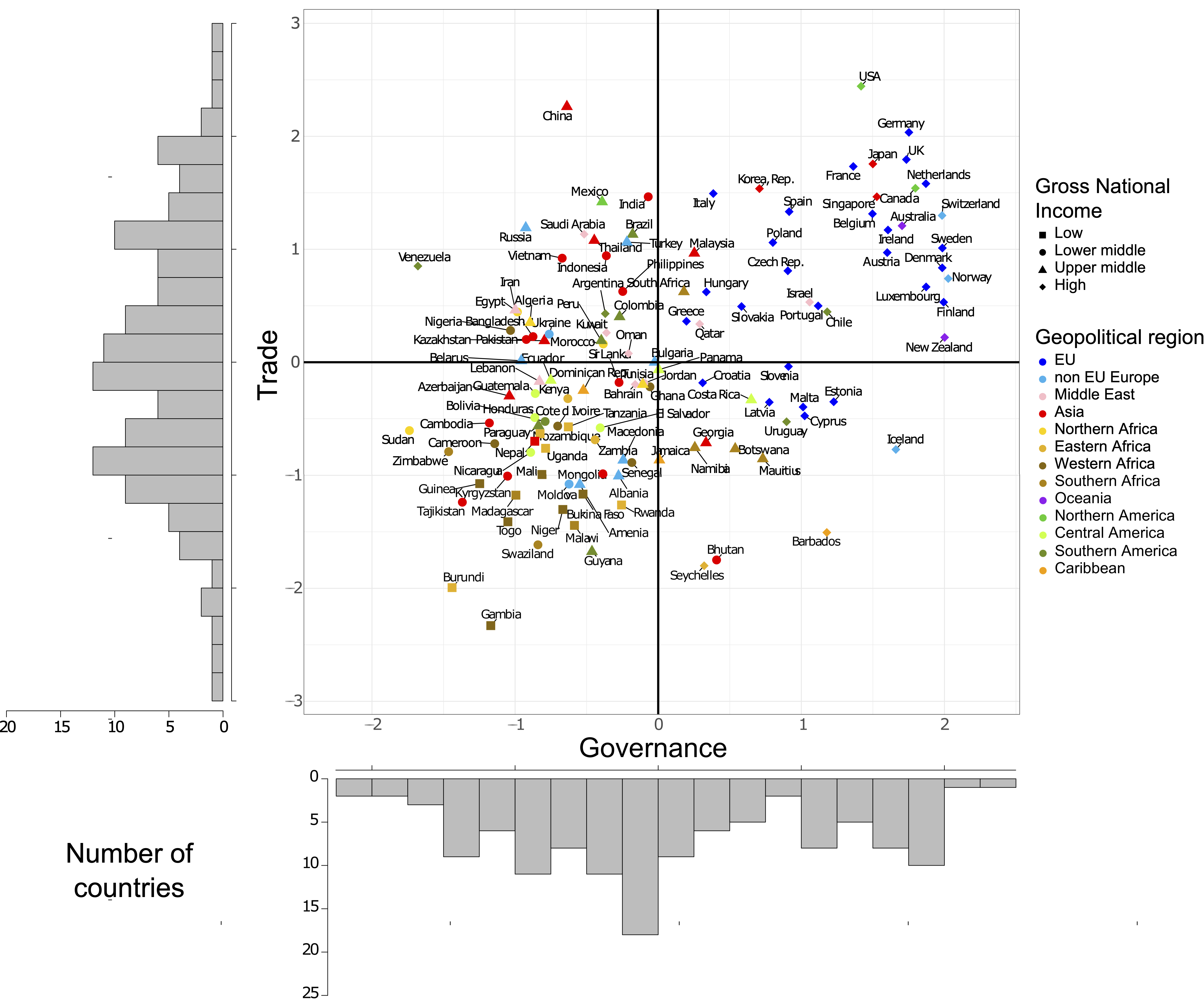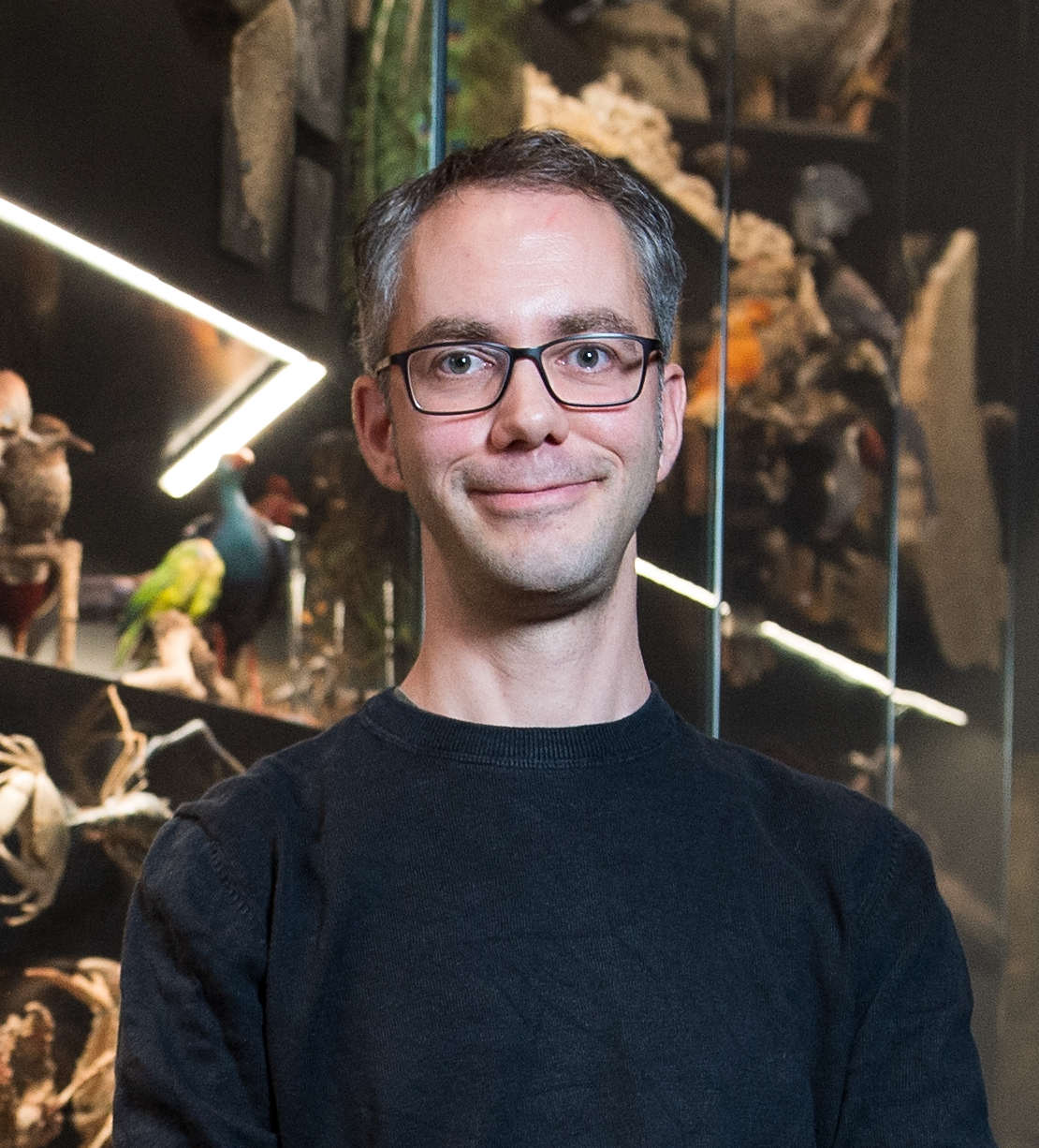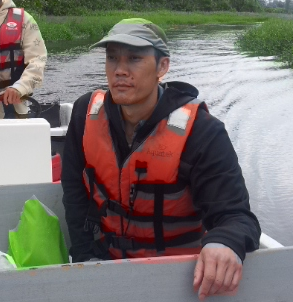
@AlienScenarios
franz.essl@univie.ac.at
bernd.lenzner@univie.ac.at
adrian.garcia@univie.ac.at
| Having trouble viewing this email? View it in your browser, or get it as a pdf. |
 |
https://alien-scenarios.org @AlienScenarios franz.essl@univie.ac.at bernd.lenzner@univie.ac.at adrian.garcia@univie.ac.at |
|
Good
day! |
|
AlienScenarios leads a European study on the management of invasive alien species |
Carla García-Lozano and Núria Roura-Pascual led a team of researchers from all over Europe to design a survey for local managers of invasive alien species (IAS) entitled: The management of invasive alien species: practices and perceptions. The survey has been distributed in 23 European countries and nearly 2.000 responses have already been collected. This has been possible thanks to researchers from Iceland, Ireland, the United Kingdom,Norway, Sweden, Finland, France, Belgium, Holland, Denmark, Germany, the Czech Republic, Poland, Portugal, Spain, Andorra, Switzerland, Austria, Italy, Croatia, Romania, Ukraine and Greece. Here we share a map that is updated every week. You can access it to interactively track the preliminary results by region or by country in Europe. The survey is still open, so if you have not done it yet, please answer it here. The answers from local managers will help us to understand the trends of IAS and their associated management in Europe. Their collaboration is of great help as it will provide alternative data on the management of IAS that is being carried out at a local European level. The results of this research will be passed on to the experts on biological invasions in the European Commission and to the Invasive Species Specialist Group from the SSC (Species Survival Commission) in the IUCN (International Union for Conservation of Nature). The experience of local managers will help researchers to propose improved guidelines for local management of IAS in Europe. |
 |
|
InvaCost, an international and interdisciplinary project on the economic costs of biological invasions |
| Despite obvious impacts on biodiversity and notwithstanding decades of scientific and managerial efforts, biological invasions still lacks of awareness, support or sometimes even experiences denial. Ecological impacts are indeed difficult to quantify and convey, and when communicated, they are highly diverse, context-dependent and frequently incomparable, preventing global syntheses. Economic costs, however, even though various in type and scale, can be standardized into currency, which provides a common metric that allows compilations and comparisons, and therefore facilitates a more quantitative grasp on one aspect of the impacts of biological invasions. Such a cost synthesis is the core of the InvaCost project, an open and updatable database on the available economic costs measured and published in scientific and grey literature, in 22 languages. Over 13,500 costs in size and growing, each described by 65 descriptors, InvaCost now spans nearly 988 invasive alien species in 174 countries. This work was initiated by the French Partner (Franck Courchamp and colleagues) of AlienScenarios, and has also provided the opportunity to progressively build and consolidate a robust, diverse and functional network of over 103 experts from 39 countries, representing several disciplinary fields: ecologists, economists, statisticians, data analysts and experts in different ecosystems and taxonomic groups. |
 |
Network of collaborators of InvaCost. Each link represents a shared co-authorship in a scientific article published on the InvaCost project. -Click on figure to enlarge-
|
This massive international and interdisciplinary collaboration has now yielded 40 publications in international journals, with 10 more in revision or submitted there, and another 26 in various stages of preparation.
These include descriptive studies of the costs of invasions in different parts of the world, or of various taxonomic groups, as well as more conceptual or explorative studies, such as the modelling of the extra cost
incurred per year when management is unnecessarily delayed. Since the InvaCost database is constantly being corrected, improved and updated, some of the published figures evolve and we have set up a
"living figure"
directly linked with the latest available version of the database. At the moment of writing (version 4.1), the economic cost of biological invasions worldwide amounts now to US$ billion 2,168, counting only the most
robust costs (simultaneously actually observed and most reliably reported). InvaCost is a fully "open access" project, whereby all resources
(from the database itself,
to the R package to analyze it) and all the outputs (articles, reports and the living figure) are openly available for free at http://invacost.fr/. All new costs that
are not yet included in the database can be sent to us using a form on that link to updates@invacost.fr, so that they will be included in the next database
version. We hope that this large project will help scientists and managers alike advance biological invasions higher in the agenda of policy makers, and ultimately contribute to the protection of local biodiversity around the world.
| |
|
IPBES Invasive Alien Species Assessment: Third author meeting |
| |
The IPBES Invasive Alien Species Assessment had its third author meeting and the first summary for policy-makers meeting from 4th, April to 10th, April in Aarhus, Denmark. The meeting was hybrid with coordinating lead authors and co-chairs meeting in person and Lead Authors, Review Editors and Fellows joining remotely. It was an intense week of seven full working days and many discussions. Most of the discussions were about consistency across and interlinkages between chapters as well as cross-cutting themes, which should be addressed in all chapters, such as scenarios and models and knowledge of Indigenous people. In addition, the >5,000 reviewer comments, which were submitted during the last external review, had to be addressed and answered individually. This meeting marked the onset of the final phase of writing before submission of the chapters in October and the approval by the governments in May 2023. In the next months, the chapters will be finalised and the summary for policy-makers will be revised for a second external review. The whole report will then be published likely June 2023. Hanno Seebens, Franck Courchamp, Bernd Lenzner, and other AlienScenarios members are actively involved in the development of this assessment. |
|
Upcoming events: Scenarios & World Biodiversity Forum |
| In June and July, the global scenario and biodiversity community will meet at two events, the Scenarios Forum in Laxenburg, Austria and the World Biodiversity Forum in Davos, Switzerland. Alien Scenarios will be represented at both events and we aim to strengthen current and establish new collaborations to introduce and strategically position the biological invasion scenarios within the wider community. |

|
|
The Scenarios Forum hosted by the International Institute of Applied Systems Analysis (IIASA) will focus on the ongoing development of scenario
frameworks for integrated climate change and sustainability research. Among other discussions, a new set of the widely used Shared Socio-economic Pathways (SSPs) have been developed and will be presented,
this is a unique opportunity to introduce AlienScenarios and discuss how our
newly established scenarios can be included into ongoing developments. |
 |
|
The World Biodiversity Forum, established in 2020, hosts leading researchers, early career researchers, practitioners, representatives from different sectors, decision-makers and societal actors to discuss
the pressing issues of biodiversity change and associated policies, adaptation and mitigation strategies. The participation of AlienScenarios will undoubtedly increase the visibility of biological invasions
as one of the pressing drivers of biodiversity change and we are looking forward to interesting discussions and exchanges.
Contributions: Lenzner, Alien Scenarios Team, Essl (2022) Biological invasions -the neglected driver in biodiversity scenarios. Session 50: Biodiversity. 20. June 2022 (16:30-18:00) Scenarios Forum Lenzner, Alien Scenarios Team, Essl (2022) Biological invasions -the neglected driver in biodiversity scenarios. Session MOD5-a: Models and scenarios for biodiversity & ES at regional to global scales. 30. June 2022 (10:30-12:30) World Biodiversity Forum Essl, GloNAF core Team, Alien Scenarios Team (2022) Biological invasions: what is needed for Global Post2020-Biodiversity policies?. Session MON2-b: Detecting and attributing biodiversity change: linking essential variables to indicators and goals. 28. June 2022 (08:30-10:30) World Biodiversity Forum |
|
A new workflow for downscaling alien species checklists |
|
"Capacity of countries to reduce biological invasions" soon available in Sustainability Science |
|
The extent and impacts of biological invasions on biodiversity are largely shaped by an array of socio-economic and environmental factors, which exhibit high variation among countries. Yet, a global analysis of how these factors vary across countries has been lacking. Guillaume Latombe and several colleagues from AlienScenarios investigated how five broad, country-specific socio-economic and environmental indices (Governance, Trade, Environmental Performance, Lifestyle & Education, Innovation) explain country-level established alien species (EAS) richness of eight taxonomic groups, and proactive or reactive capacity to prevent and manage biological invasions and their impacts. Using Governance and Trade to define a two-dimensional socio-economic space in which the position of a country captures its capacity to address issues of biological invasions, they identified four main clusters of countries in 2015, aligning with the global scenarios previously identified by AlienScenarios. By identifying the factors influencing EAS richness and the regions most susceptible to changes in these factors, these results provide novel insights to integrate biological invasions into scenarios of biodiversity change to better inform decision-making for policy and the management of biological invasions. A preprint version of the manuscript can be found here . | 
The 125 countries organized in the two-dimensional socio-economic space based on recent (2015) Governance and Trade data. The histograms show the distribution of countries based on Governance and Trade.
The bold horizontal and vertical lines indicate the origin axes, which correspond to the centroid of the country distribution. Gross National Income categories are based on the World Bank classification
(The World Bank 2019). -Click on figure to enlarge-
|
|
|
AlienScenarios researchers in the spotlight |
|
In
each issue of the Newsletter, we highlight the
researchers who are part of the AlienScenarios team. In this
seventh issue, meet Ingolf, Hanno and Brian! |
 |
Ingolf Kühn I am principal investigator at the Helmholtz Centre for Environmental Research - UFZ in Halle (Germany). Having studies in the Ruhr-Area (the most heavily industrialised region in Germany), where alien species were ubiquitous, they were just some nice additions to the botanical curiosity and unusual creatures able to colonise strange habitats. But nothing to do research on, rather to map their occurrences to increase species records. Now for over 20 years I deal scientifically with alien plant species, usually at larger scales. I am mainly interested in how they change the composition of native assemblages and communities in terms of their trait composition. And if time allows, I am off and study the colonisation of other strange habitats, namely glacier forefields in the Alps. If I were a song, I would be Hey Ho on the Devil's Back, by Katzenjammer. If I were a painting, I would be Schweizer Bergsee mit Wolkenspiegelungen (Swiss mountain lake with clouds mirrored), by Emil Nolde. If I were a fictional character, I would (like to) be Crowley (Good Omens by Terry Pratchett). If I were an alien species, I would be Psittacula krameri, the Rose-ringed Parakeet. |
| Hanno Seebens I am a postdoc and PI at the Senckenberg Biodiversity and Climate Research Centre, Frankfurt, Germany. I am very much interested in understanding how humans influence nature, and what we can do to avoid those. My current research focus is on large-scale data analysis of spread of species and how these changed over time. I like to break down complexity to identify the (hopefully) simple underlying mechanisms to reproduce complexity again. I am committed to open science and collaboration. I like numbers, complexity described by simple functions, beautiful analyses (indeed, there is beauty in data analysis), and maps, of course. But also collaboration with great colleagues! If I were a song, I would be What's your name by Morcheeba. If I were a painting, I would be Lighthouse Hill by Hopper. If I were a fictional character, I would be The unnamed narrator in Fight Club (played by Edward Norton). If I were an alien species, I would be Mnemiopsis leidyi , the sea walnut . |
 |
 |
Brian Leung I am Associate Professor at the Department of Biology in McGill University (Canada). I am interested in predictive, integrative modeling under uncertainty, across global, country and regional scales, including ecological forecasts, bio-economic risk analysis, management and policy as well as development of theoretical tools. If I were a song, I would be Sail, by Awolnation. If I were a fictional character, I would (like to) be Geralt of Rivia, -because I just finished watching season 2-. If I were an alien species, I would be Ciona intestinalis, - cause it's a big blob. |
 |
 |
|
Contact Us Visit us on the web at https:\\alien-scenarios.org |
If you no longer want to receive our emails, you can un-subscribe here. |